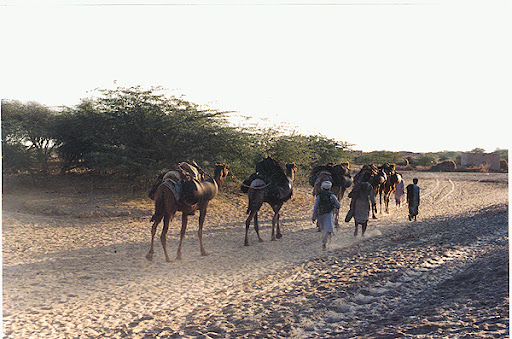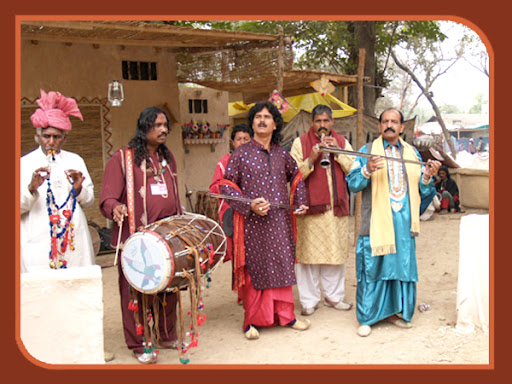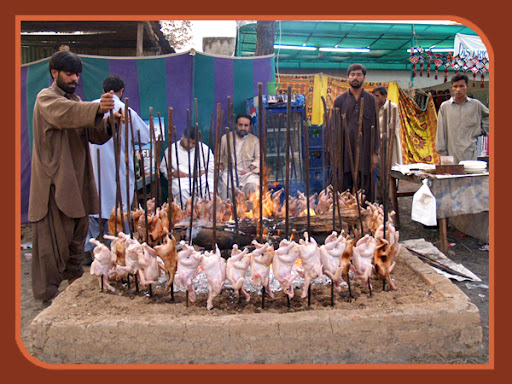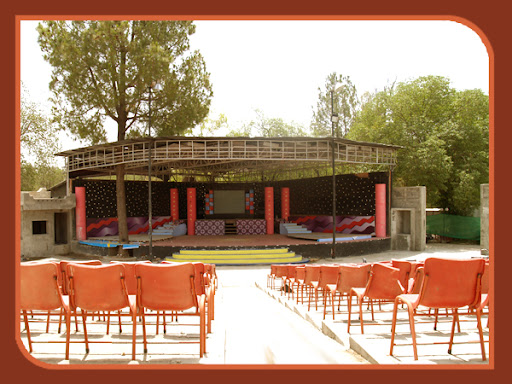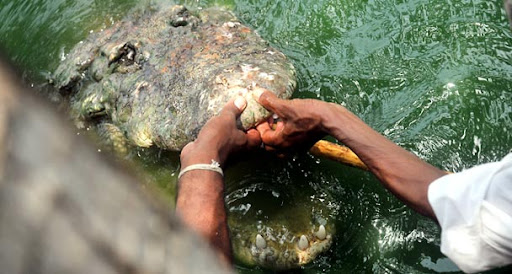An extensive area in the southwest of Pakistan, Cholistan is covered with rolling sand plains and dunes. It is an area separated from the Indus valley by the dry channels of the Ghaggar River in the Punjab. Lying between Thar on the west and Rajputana on the southeast, this extensive desert is called Cholistan or Rohi.
The desert of Cholistan extends over 10,399 square miles and includes two-thirds of the former state of Bahawalpur. It is in fact an extension of the Thar desert, whose western edges are formed by the ancient river called the Hacra. Cholistan region can be divided into two parts: Greater Cholistan and Lesser Cholistan.
Greater Cholistan, in the south, stretches over an area of 700 square miles. The dunes, or tibbas, can rise as high as several hundred feet in the southern quarter, while in Lesser Cholistan, which stretches over 3000 square miles, the dunes are low. Salt flats occur among the sand throughout Cholistan. They can stretch for several miles or be as small as a few hundred yards each. Flash storms convert them temporarily into lakes, and the runoff is collected in natural depressions or man-made ponds called tobas. Receiving five inches of rainfall a year, this region is not drained by any perennial stream. Therefore, the topography has been formed mainly by the wind. The only other sources of water are wells, which are rare in Cholistan.
Given these circumstances, the population is nomadic, moving from one water hole, or toba, to the next. When these dry up, they migrate to the semi-permanent settlements around the wells; in extreme draught they move to the permanent settlements at the edge of the desert.
The climate of this desert region is as hot as 1250F (or above) in summer; winters are cold. The annual rainfall is four to five inches, and the rainy season lasts from July to August
Thar
The district of Tharparkar consists of two distinct parts called Thar (the desert) and Parkar (the small hilly tract in the extreme southeast). It was first known as Thar Parkar districts but subsequently became Tharparkar in 1920.
It lies in Sindh between 240-10/ to 250-44/ north latitude and 680-55/ to 710-05/ east longitude. It is bounded on the north by Sanghar District, on the west by Hyderabad District, on the south by the Rann of Kutch and on the east by Marwar. The desert area to the east consists of barren tracts of sand dunes covered with thorny bushes. There are also lakes in the desert area, of which the largest is Saran which supplies salt to the entire district. It provides revenue to the government and work for the people. Minerals such as raper-khar or chambo used as washing soda are also found in the desert.
The common plants of the desert area are thukar, phog (Calligonum polygonoeides), ak (Calotropes gigantea), buh, khabai, mural, kandi (Prosopic speugeras), baneri and rohiro.
Thar has a tropical desert climate, and April, May and June are the hottest months. The mean maximum temperature during this period is 410C. December, January and February are the coldest months. The mean maximum and minimum temperatures during this period are 280C and 90C respectively.
Rainfall varies from year to year. Most of the rain occurs in the monsoon months between June and September. The winter rains are insignificant, while April, May, October and November are completely dry. Famines are quite frequent in the desert when there are no rains. The Thar is entirely dependent on rainfall, and the country becomes picturesque with green patches on sand dunes after the rains. Jawar and bajra are the main crops grown in the desert, but when the rain fails, the inhabitants migrate to the irrigated portion of the district and earn their livelihood by labour and return home when he next rainy season approaches.
In the desert, dangerous snakes such as khapar, cobra, plain, lundi and other snakes are generally found in the rainy season in great numbers. Many deaths are caused by snake bites. There are also black scorpions.
Hyena and lynx are found, mostly where the desert meets the Rann of Kutch. Another animal is the gorkhar (wild ass) used for carrying baggage. In the interior of the desert, camels are the only means of transport and of ploughing the land
